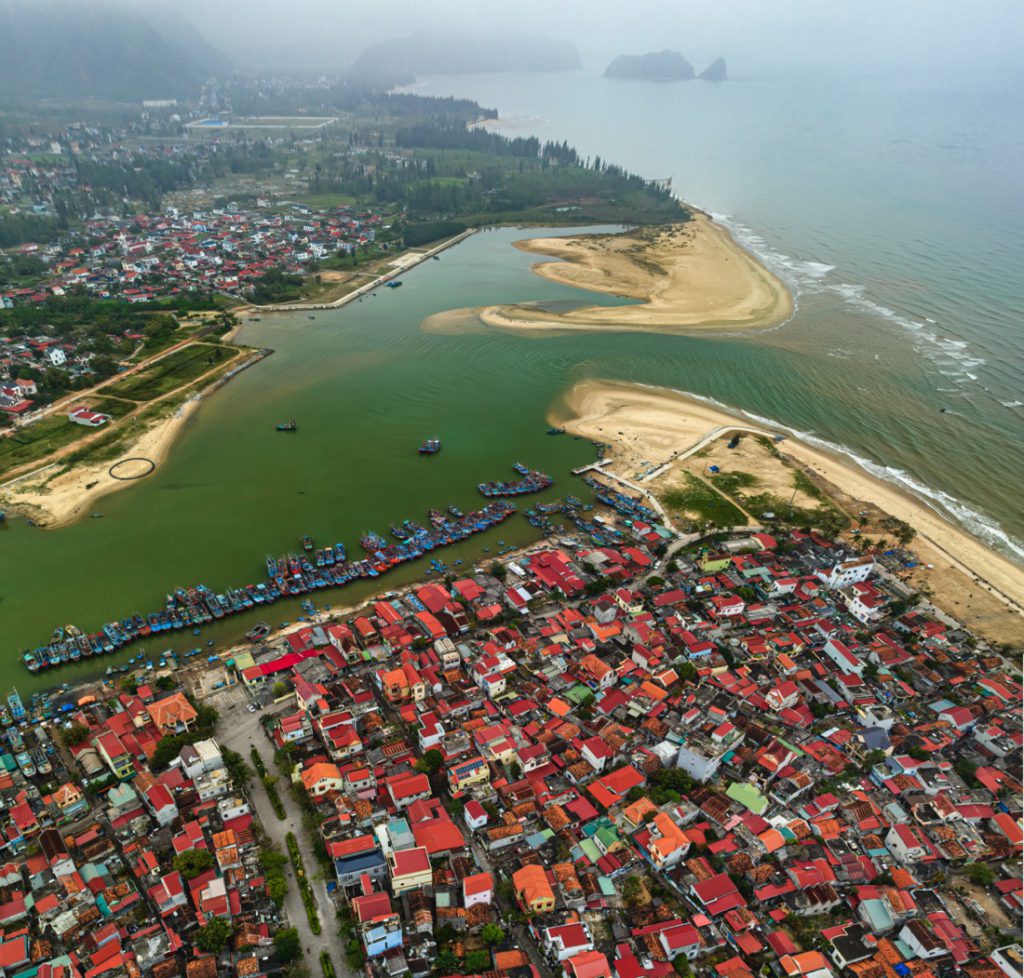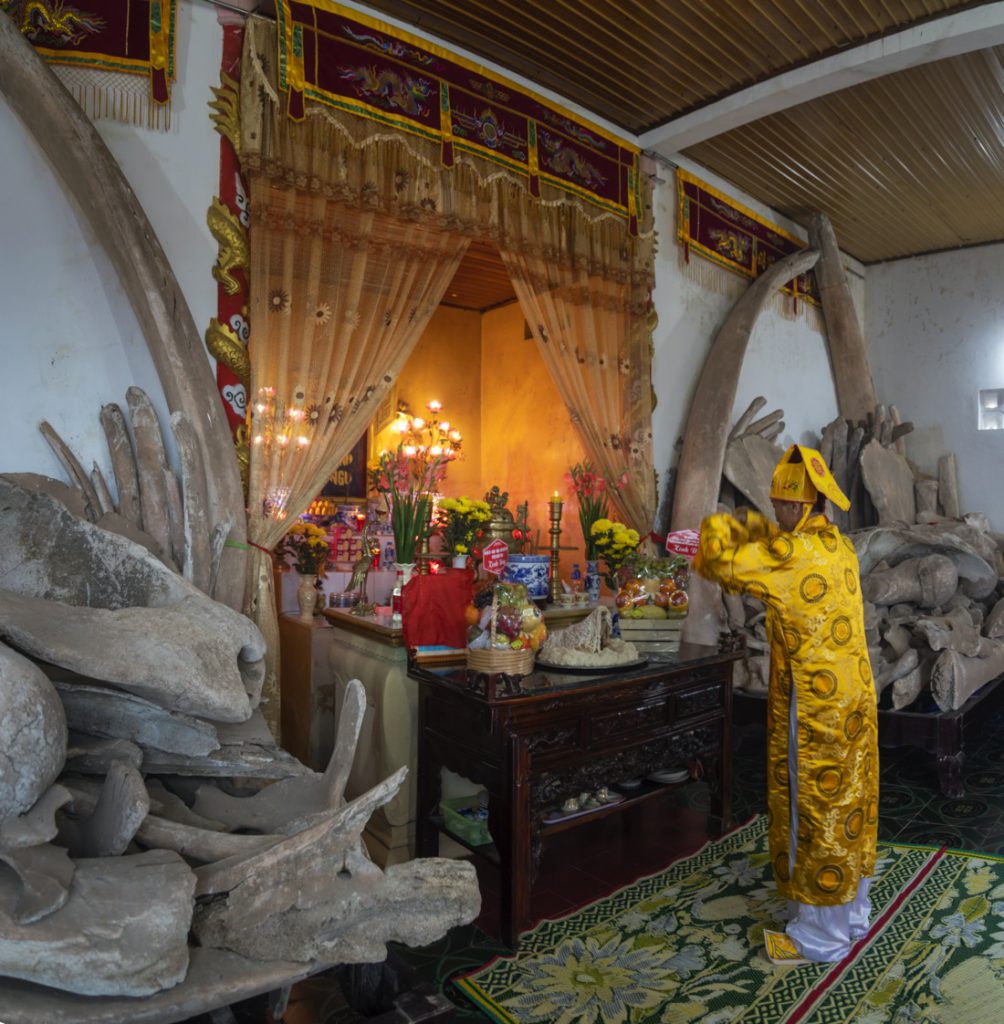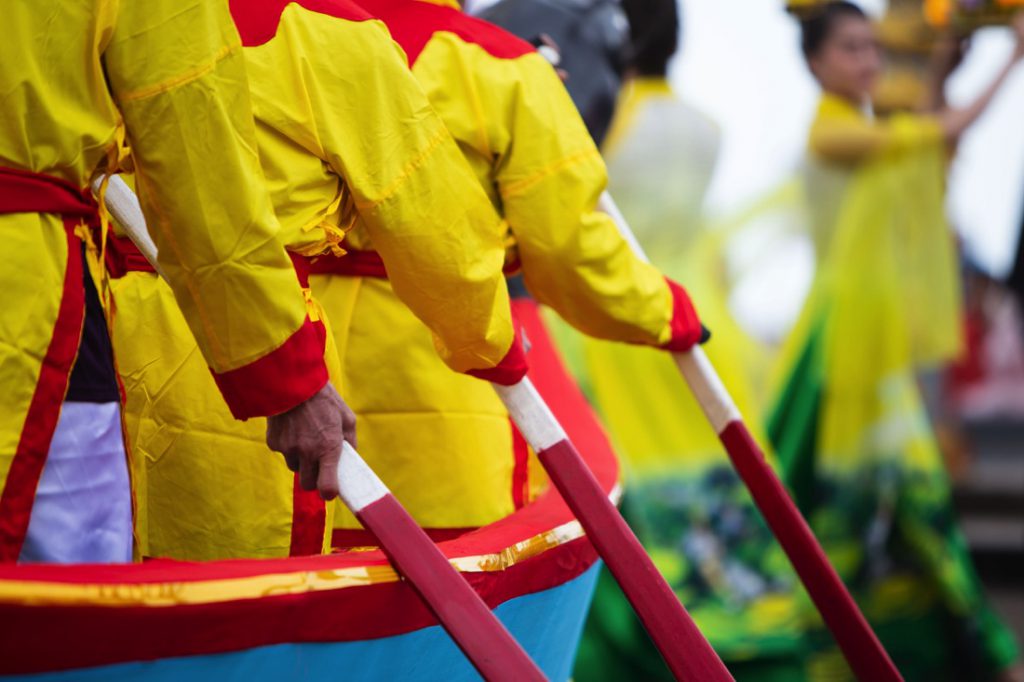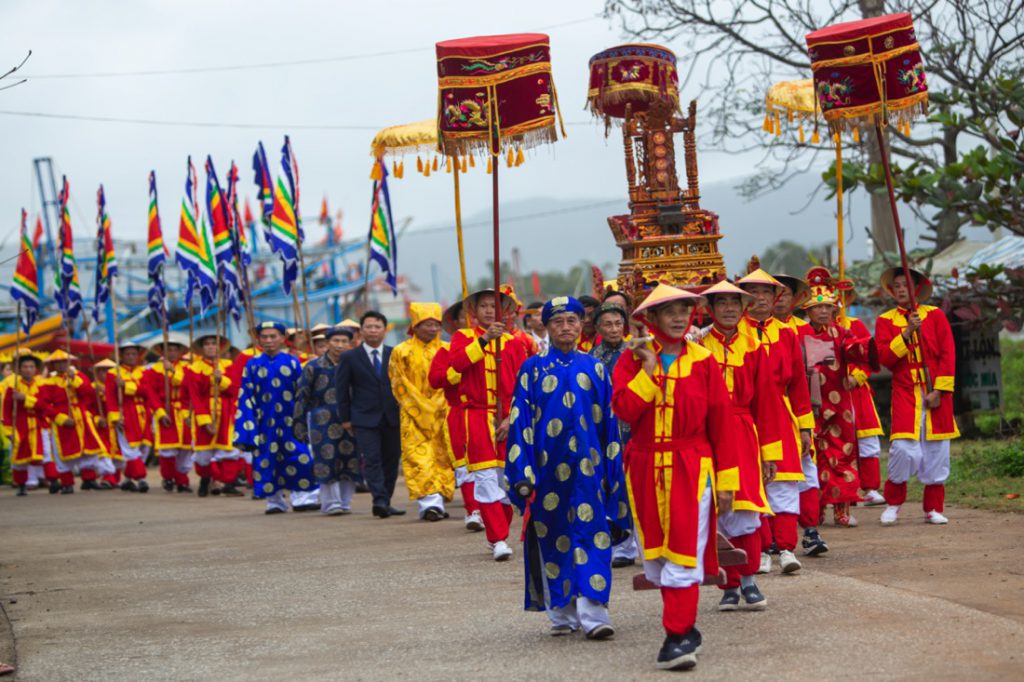Hoang Bui
Canh Duong Village lies on the right bank of the Roon River. Viewed from above, the village resembles a small peninsula long described as a boat in the sea. Before 1945, the people of Quang Binh Province voted Canh Duong as one of the eight most beautiful villages in the Bo Chanh Region.

According to the annals, Canh Duong Village was founded in 1643 (the Year of the Water Goat), which makes the village 380 years old. The original inhabitants came from the provinces of Nghe An and Thanh Hoa. This region has managed to preserve many precious artifacts, such as the ancient Canh vien hong chung bell made during Emperor Canh Thinh’s reign in 1801; a stone stele with the names of the village’s successful academics; and many cultural relics that depict the customs and traditions of the locals.
Distinctive customs
Canh Duong is home to many remarkable customs. First is the Lunar New Year’s Eve Holy Fire Procession, which originated from the nomadic lifestyles of sea-dwelling people. During the transition between the old and new years, village elders visit the ancestral temple to make offerings to the gods and Lord Nam Hai. They pray for peace and good luck for the village’s fishermen.
The most respected elder lights his torch with the flame on the ancestral altar and uses it to light the bonfire in the middle of the courtyard. As the clock strikes midnight, the fire is distributed to other families in the village. Those who retrieve the fire are all healthy young men or male household heads. This holy fire is expected to bring good fortune to the villagers.

In addition, the village is home to a special form of lullaby. The Canh Duong lullaby does not begin with the familiar “a oi” as in the other Vietnamese regions. Instead, it starts and ends with “ho he ho he, boong boong boong boong…” Men sing lullabies here, as well as women.
According to Nguyen Tien Nen, a connoisseur of Can Duong culture, these melodies resemble the sounds of waves slapping against the sides of a boat, as the villagers once lived primarily on vessels. When the family was at sea, the crashing waves would drown out mothers’ and sisters’ gentle voices. Only fathers and brothers’ powerful voices would be able to lull the baby to sleep. The lullabies not only retell stories from everyday life but also pass down seafaring knowledge and confessions of love.
It is not only elderly men who sing these lullabies. Middle-aged and younger men sing them to lift their spirits and those of their boat mates as they cast their nests, rock their boats, and move their haul to the mainland.
With only me at the oar,
Who will help me trim the sails and bail the water?
When you marry me, you won’t need to worry about hunger
When you marry me, you can bail the water while singing your heart out
Ho he ho he, boong boong boong boong…
Today, Canh Duong’s villagers sing some cheerful and encouraging songs to motivate each another to work harder:
“Those who visit our village today
And sail with us from dawn to dusk,
You will see our boats laden with fruits from the sea,
And our girls greeting us with open hearts
Ho he ho he, boong boong boong boong…

Canh Duong’s fishing fleet is among the strongest in Quang Binh Province, allowing them to reach the far-off fishing grounds in the Hoang Sa and Truong Sa Archipelago. These simple lullabies motivate these men to stay firm and steadfast during their long journeys.
A cultural village
On Vietnam’s tourism map, Canh Duong also stands out thanks to its remarkable murals. The village is home to dozens of charming 3D-effect murals, which depict local customs, work days, traditional games and boat races, rowing on dry land, and whale worship.
Worshipping whales is deeply ingrained in the villagers’ subconscious. Many still call this village “Whale Village” due to its distinctive whale worshipping customs. The village is home to a whale graveyard with over 30 graves facing the sea. Each tomb bears a headstone and a name, and the villagers often go there to offer incense. The Ngu Linh (“Sacred Fish”) Temple was built to worship and preserve two whale skeletons (one male and one female) that beached in the village hundreds of years ago. These are the largest preserved whale skeletons in Vietnam, with a length of more than 28m. Ngu Linh Temple is a place of spiritual refuge for many local fishermen.

Since the temple was built, the Cau Ngu Festival has been organized on the first full moon of the lunar year to venerate these guardians. Simple dreams of a prosperous life, favorable weather, and successful forays out to sea are expressed through earnest prayers to Lord and Lady Whale. “Rowing on dry land” is the most fascinating, vivid, and distinctive part of this festival. The “rowing” takes place on the sandbank in front of Lord Whale’s shrine. First, a symbolic boat is made from bamboo and papier-mâché. A singing troupe comprised of eight to ten members holds the oars and pretends to row as they sing folk songs related to the sea.
Canh Duong Villagers are also known for their openness, just like the sea. Since their founding, the villagers have looked to the river and the sea for their livelihood. They are not content with fishing alone but have learned and created new seafood processing techniques, transforming fishing into a vital part of a thriving trade and marine industry. These villagers not only trade with neighboring communities but also forge new connections across the country through trading, exchanging goods, and exporting manpower. As a result, Canh Duong has become a major cultural and economic powerhouse in Quang Binh Province.










